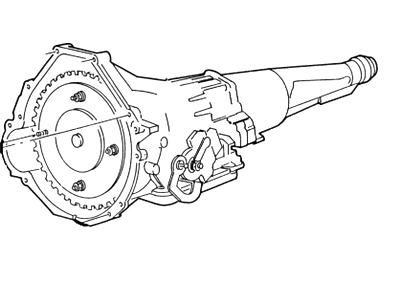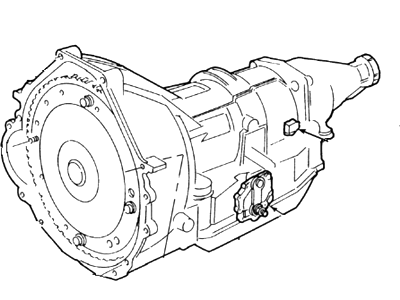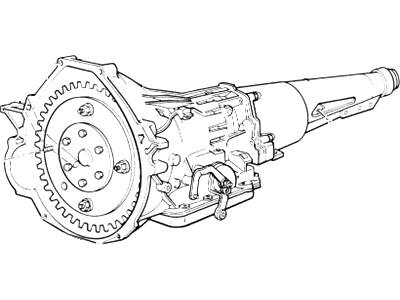×
- Live Chat
- 1-888-788-9341


My Garage
My Account
Cart
Genuine Ford F-250 Transmission Assembly
Trans Assembly- Select Vehicle by Model
- Select Vehicle by VIN
Select Vehicle by Model
orMake
Model
Year
Select Vehicle by VIN
For the most accurate results, select vehicle by your VIN (Vehicle Identification Number).
48 Transmission Assemblies found
Ford F-250 Automatic Transmission Assembly
Part Number: F6UZ-7000-FARM$3267.88 MSRP: $3865.33You Save: $597.45 (16%)Ships in 1-3 Business DaysFord F-250 Reman Automatic Transmission Kit
Part Number: F4TZ-7000-ERM$3379.88 MSRP: $3998.67You Save: $618.79 (16%)Ships in 1-3 Business DaysFord F-250 Automatic Transmission Assembly
Part Number: XL3Z-7000-HBRM$3379.88 MSRP: $3998.67You Save: $618.79 (16%)
| Page 1 of 3 |Next >
1-20 of 48 Results
Ford F-250 Transmission Assembly
We provide a wide range of Ford F-250 Transmission Assembly at the best prices possible. If you need Ford F-250 Transmission Assembly, you can shop with confidence on our website. All our OEM parts come with a manufacturer's warranty and are delivered to your door step with a fast delivery service.
Ford F-250 Transmission Assembly Parts Questions & Experts Answers
- Q: What Are the Different Automatic Transmissions Available on Ford F-250, and How Do They Differ in Terms of Torque Capacity and Speed/Load Sensing Mechanisms?A: Various automatic transmissions have been featured in the F-series and Bronco, including the AOC 4-speed, C4, C5, C6 3-speeds, and the E4OD and 4R7OW 4-speeds. The difference lies in torque capacity and shift point mechanisms; the C-series uses a governor and vacuum diaphragm, the AOD uses a governor and throttle valve rod or cable, while the E4OD uses sensors and computer programming. For repairs or overhauls, professional assistance is recommended, or consider replacing the unit. Use high-temperature-resistant seals on these transmissions.
- Q: What is the E4OD transmission and how does it operate on Ford F-250?A: The E4OD transmission is a fully automatic, electronically controlled, four-speed unit with a locking torque converter. Transmission gear selection and converter clutch operation in the Overdrive range is controlled by the Electronic Engine Control system. Operating conditions are relayed to the Powertrain Control Module (PCM) by various sensors throughout the vehicle and transmission. The computer compares these conditions with stored parameters and logically determines the state in which the transmission should operate. The computer sends the appropriate commands to the internal solenoid body. Five solenoids within the assembly actuate the hydraulic circuits which control gear selection, gear change harshness (control pressure), and torque converter lock-up or coast operation.
- Q: How do you remove and install a automatic transmission on Ford F-250?A: To remove the transmission, start by disconnecting the cable from the negative battery terminal. Then, raise the vehicle on a hoist or with jack stands for better access. Drain the transmission fluid and temporarily install the pan. Remove the torque converter access cover and adapter plate bolts. Take off the driveplate-to-converter attaching nuts, making sure to mark their relationship to the driveplate. Rotate the engine to access the converter drain plug and remove it. On 2WD models, remove the driveshaft and cover the transmission end. On 4WD models, remove the Transfer Case. Detach the speedometer cable on pre-1992 2WD models. Remove the manual shift linkage, TV control rod or cable, kickdown rod or cable, and vacuum modulator hose if equipped. Disconnect the neutral safety switch electrical connector, manual lever position sensor electrical connector (E4OD only), and solenoid body electrical connector (E4OD only). Remove the transmission fluid filler tube and dipstick. Take out the starter and disconnect the oil cooler lines. Position a transmission jack and remove the rear mount and insulators. Remove any gussets and the crossmember. Disconnect the inlet pipe flange(s) from the exhaust manifold(s). Support the rear of the engine and remove the transmission housing-to-engine bolts. Carefully move the transmission to the rear, down, and away from the vehicle, ensuring the converter stays with it. To install the transmission, follow the reverse of the removal procedure. Push in and turn the converter to engage it with the front pump. Rotate the converter to align the bolt drive lugs and drain plug with the driveplate holes. Avoid a "nose-down" attitude to prevent disengagement of the converter from the pump gear. If the torque converter is bolted to the driveplate, position it with one bolt hole at the six o'clock position and install all bolts before tightening. Adjust the kickdown rod/cable, TV rod/cable, and manual selector linkage as needed. Lower the vehicle and add fluid to the Max mark on the dipstick with the engine off. Start the engine, check the fluid level, and top up if necessary.










